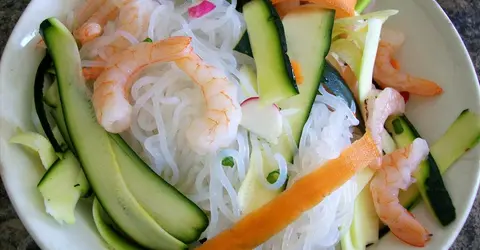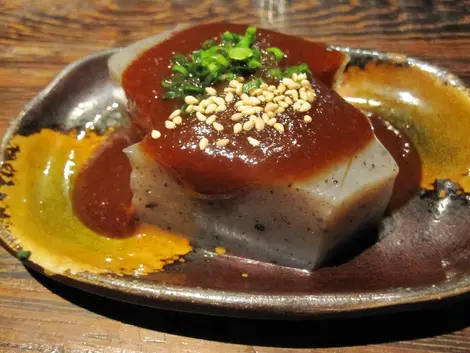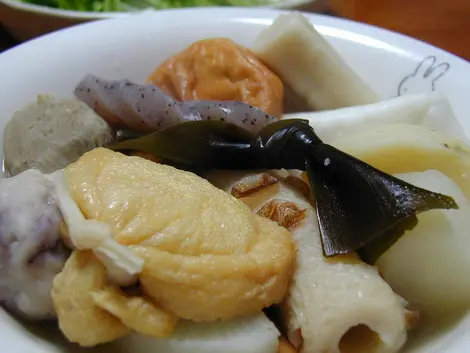The konnyaku こんにゃく
The star of slimming diets
Consumed for centuries in Asia, konnyaku, pronounced "konjac", has for some years become synonymous with diet in the West. But what is it exactly?

Konnyaku vermicelli salad (shirataki)
Sarah R
When you open a package of konnyaku, its smell is reminiscent of a seafood product, but it is not!
What is it about?
Konnyaku is a plant native to Vietnam cultivated nowadays throughout Asia for its rhizome. The latter contains starch and a fiber called glucomannan. Once the plant has been harvested, its tuber is cooked and dried before reducing it to powder. This kind of flour is then mixed with water and calcium which will form a gelatinous paste called konnyaku in Japanese.
Read: Japanese winter specialties
Konnyaku comes in all sorts of products, from vermicelli (shirataki), to "pies", to "rice" made from konnyaku flour, to fruit-flavored jellies. The Japanese cook it as an accompaniment to meat or fish, in dishes simmered in soy sauce and shirataki are one of the essential ingredients of nabe (kind of fondue).
Read also: Being vegan in Japan
Why this enthusiasm in the West?
In France, in recent years, konnyaku has invaded the diet shelves. It is found in appetite suppressant capsules, "spaghetti" (shirataki), and other products all promising to lose weight. It is true that with less than 10 calories per 100 grams, you can eat it at will and consume it as a substitute for starchy foods. Rich in fiber, it is made up of 50% water and has the power to absorb liquids. It thus swells quickly in the stomach, bringing a feeling of satiety. It is also credited with "detox" virtues because it ensures the regularity of intestinal transit and facilitates the elimination of toxins.
In addition to its benefits for slimming diets, glucomannan would also have beneficial effects on constipation, cholesterol, and diabetes.
See: Japanese vegetables
To consume with moderation
Konnyaku, consumed in large quantities, can cause bloating, gas or diarrhea.
Although it is rich in fiber and calcium, it contains no other minerals and very few vitamins, so it should be eaten alongside other foods and not as the main ingredient.
Finally, it is also advisable to drink a lot when consuming foods containing glucomannan to avoid obstruction of the digestive tract. Konnyaku jellies do not melt easily in the mouth and must be chewed to avoid choking...
Finally, if it can be a slimming ally, it is strongly advised not to eat it!






















